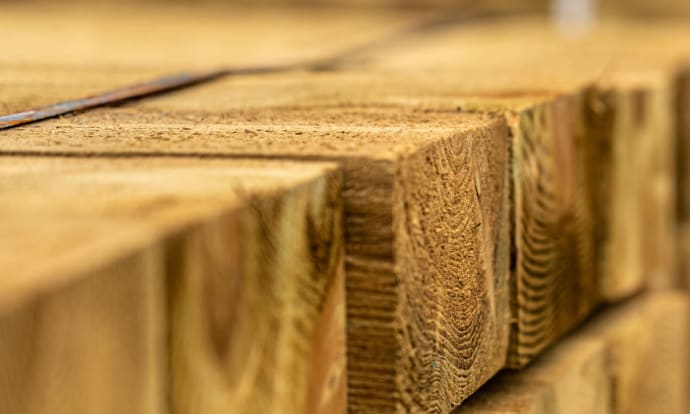Guide on the Importance of Treating Rough Sawn Wood

Why is Treating Rough Sawn Wood Important?
In this guide, we’ll look into the aspects of treating rough sawn wood and why it’s so important for both aesthetics and functionality.
Understanding Rough Sawn Wood
Rough sawn wood refers to timber that has been cut directly from the log, leaving a textured and uneven surface. While this raw state provides natural, rustic charm, it can also leave the wood susceptible to environmental factors such as moisture, insects, and decay.
The importance of Treating Rough Sawn Wood
Moisture Protection
Untreated rough sawn wood can be highly vulnerable to moisture, which can lead to decay and rot of the timber products. By sealing or staining the timber, you can treat the wood properly and form a protective barrier against water infiltration, helping to extend the longevity of the product.
Insect Resistance
Wood-boring insects, such as termites, can wreak havoc on untreated wood. Treating rough sawn lumber with insect-resistant solutions can help to act as a deterrent, safeguarding the wood from potential infestations.
Enhanced Durability
Exposure to a range of weather conditions, including sunlight and temperature changes, can cause untreated wood to warp and degrade over time. Regular treatment can help maintain the structure of the wood, enabling it to withstand adverse weather conditions.
Aesthetic Appeal
Treating rough sawn enhances its natural rustic appearance by highlighting the natural grain and colour of the wood. Stains, oils and sealants not only protect the wood but also contribute to a more refined appearance.
Minimising Shrinking and Swelling
Untreated wood is prone to changes in size and shape due to fluctuations in humidity. Proper treatment can help to minimise these changes and can also help to prevent the development of cracks.
Choosing the Right Treatment
Sealants & Stains: For timber ranges like knee rail and post and rail fencing that will be outdoors, sealants and stains can help shield a range of environmental factors. You can purchase ones with UV protection, which help prevent sun damage.
Insect Repellent Treatments: In areas that are prone to insects, choose treatments that are specifically designed to repel pests and preserve the wood.
Interior vs. Exterior Treatments: Consider whether the wood is being used indoors or outdoors and choose your treatment dependent on this and whereabouts your timber product is being used.
Why choose First Fence Timber Products?
Our Knee Rail Fencing and Timber Post and Rail have all been pre-treated, tanalised to UC4, making it a high-quality finished product. They are also manufactured using Norway Spruce wood, an excellent quality to use in manufacturing.
The timber undergoes treatment by being placed in a large vacuum-sealed tank. Chemicals are then pumped into the tank, using a vacuum to go a few millimetres deep into the wood. So, the tanalised treatment might not cover the whole depth, making it important to treat any cut parts.
However, once purchased, regular inspections and maintenance are essential to providing a long-lasting and durable timber product, preventing the aspects mentioned above, decay and moisture. By treating the wood at regular intervals, you can help prevent environmental factors like this from occurring.
In conclusion, treating rough sawn wood is extremely important. When you regularly treat it and treat it right, you’re not only keeping its natural rustic look but also making sure that it lasts longer, is protected from adverse weather, and stays strong.
So, whether you’re building a planter with our railway sleepers, installing a boundary around a car park with our knee rail fencing, or keeping in livestock with our post and rail fencing, you must take the time to treat rough sawn wood, to make sure it lasts a long time.


